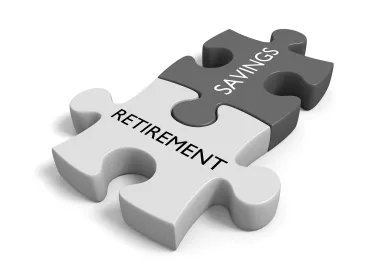Recently issued Notice 2023-43 provides interim guidance on certain changes to the Employee Plans Compliance Resolution System (EPCRS) made by the SECURE 2.0 Act of 2022. In particular, the notice addresses how plan sponsors and individual retirement account (IRA) custodians should apply the act’s new standards for self-correction under EPCRS until the related revenue procedure (Rev. Proc. 2021-30) is updated in response to the changes mandated by the act. However, the notice does not address other EPCRS-related changes dictated by the act, such as those regarding the correction of overpayments.
IN DEPTH
IMPACT OF SECURE 2.0 ON SELF-CORRECTION UNDER EPCRS
Section 305 of the SECURE 2.0 Act establishes new rules governing self-correction under EPCRS by providing that plan sponsors and IRA custodians may self-correct any “eligible inadvertent failure” to comply with the requirements of the US tax code. For this purpose, the definition of eligible inadvertent failure is very broad and generally includes any failure that meets the following conditions:
-
Is not egregious and does not involve an abusive tax avoidance transaction or the diversion or misuse of plan assets
-
Occurs despite the existence of practices and procedures reasonably designed to promote and facilitate compliance with the US tax code
-
Is not identified by the Internal Revenue Service (IRS) prior to any actions demonstrating a specific commitment to implement a self-correction with respect to the failure
-
Is corrected within a reasonable period after the failure is identified.
This sweeping new rule opens the door to a potentially significant increase in the availability of self-correction to certain failures that were previously ineligible for the self-correction program under EPCRS. However, the act only sets forth broad, general rules governing the correction of such failures and makes it clear that the particulars will be established by future guidance—including an update to EPCRS (currently set forth in Rev. Proc. 2021-30) by December 29, 2024.
KEY TAKEAWAYS FROM THE NOTICE
Notice 2023-43 provides interim guidance that may be relied upon to self-correct failures under Section 305 of the SECURE 2.0 Act until EPCRS is updated to reflect the related changes. This includes the following key guideposts for plan sponsors and IRA custodians:
-
Plan sponsors may self-correct eligible inadvertent failures; IRA custodians may not until further guidance is issued.
-
Plan sponsors may self-correct a broader array of failures. For example, there is no longer a prohibition on self-correcting so-called “significant” operational failures that occurred more than three years prior to the correction, nor is there a prohibition on self-correcting significant failures under SEPs and SIMPLE IRAs.
-
Plan sponsors cannot self-correct certain failures until further guidance is issued. These failures include, for example, failures to initially adopt a written plan, failures relating to orphan plans, significant failures in a terminated plan, failures involving excess contributions to SEPs or SIMPLE IRAs corrected by leaving the contributions in affected participants’ accounts, demographic failures not corrected using a method set forth in existing regulations, operational failures corrected with retroactive amendments that are less favorable to participants or beneficiaries than the original plan terms, certain failures in SEPs and SIMPLE IRAs, and failures related to certain ESOP issues. The notice also explains that self-correction does not automatically result in the waiver of an excise or other additional tax resulting from an otherwise correctible failure.
-
Failures will be considered identified for purposes of curtailing self-correction when the plan or plan sponsor is under examination. Once a plan sponsor is notified of an IRS audit of the plan, it is considered under examination. However, if the audit instead involves the plan sponsor’s business tax return or is initiated by the US Department of Labor, the plan would not be considered under examination for this purpose.
-
Whether a plan sponsor’s actions show a sufficient commitment to self-correct a failure will be determined based on all the facts and circumstances, but the plan sponsor must demonstrate it is actively pursuing correction. Simply completing an annual compliance audit or adopting a general statement of intent to correct failures upon discovery will not suffice.
-
Whether corrections are completed within a reasonable period after the plan sponsor identifies them generally will be based on all relevant facts and circumstances. For this purpose, a failure (other than an employer eligibility failure) corrected by the last day of the 18th month following the date the plan sponsor identifies the failure will be deemed to have been completed within a reasonable period. Where the correction involves an employer eligibility failure (e.g., a 403(b) plan maintained by an ineligible employer), correction is deemed timely only if the plan sponsor stops all contributions to the plan as soon as reasonably practicable, but no later than 6 months, following the date the failure is identified.
WHAT’S NEXT?
The US Department of the Treasury and IRS invite public comments on the notice and other aspects of Section 305 of the SECURE 2.0 Act by August 23, 2023. Commenters are invited to suggest additional methods that should be available to correct eligible inadvertent failures, by describing both specific correction methods and general correction principles. Commenters are also invited to describe common IRA failures and suggest correction methods for those failures, and to discuss expanding EPCRS to IRA custodians and owners.




 />i
/>i
